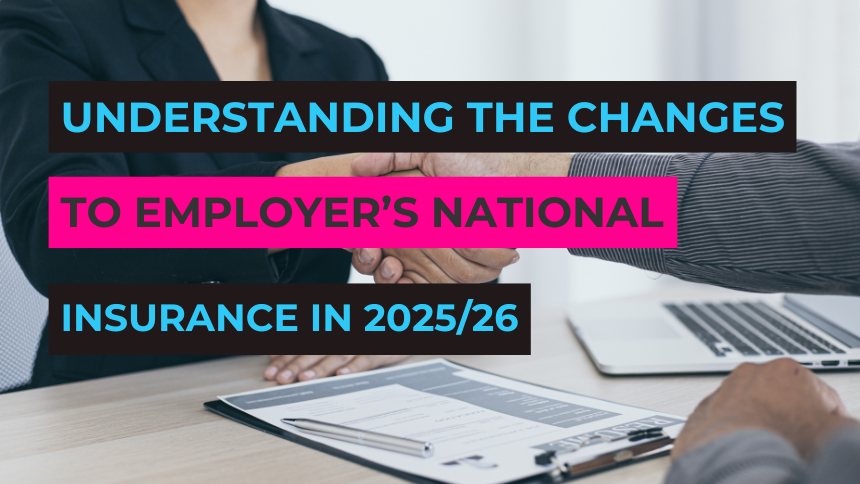The 2025/26 tax year will bring significant changes to Employers National Insurance contributions in the UK. With an increase in the rate and a decrease in the threshold, some employers may face higher costs, while others might actually benefit. Our team has put together answers to the key questions to help you understand a clear breakdown of the changes and their potential impact.
What’s Changing?
- Employer’s National Insurance Rate Increase: The percentage of Employers National Insurance (NI) that employers pay on their employees’ earnings above the threshold will increase from 13.8% to 15%. This adjustment is expected to result in higher contributions for businesses with larger payrolls.
- Threshold Adjustment: The threshold at which employers start paying NI will decrease from £9,100 to £5,000. As a result, employers will pay NI on more of their employees’ salaries, potentially increasing their overall liability.
- NI Allowance Increase: The Employers National Insurance Allowance will rise from £5,000 to £10,500. This means some employers, particularly smaller businesses, may see a reduction in their overall NI liability, potentially offsetting the higher rates and lower threshold.
Who Will Be Affected?
The impact of these changes will depend on the size, structure, and salary levels of your workforce:
- Businesses with Low-Salary Employees: Employers hiring employees with salaries close to the new threshold may see higher costs. With the threshold reducing from £9,100 to £5,000, more of their employees’ earnings will fall under Employer’s National Insurance contributions.
- Businesses with High-Salary Employees: Employers with a workforce earning well above the threshold will experience increased costs due to the higher contribution rate.
- Small Businesses: Smaller businesses, especially those managing tight margins, need to prepare for potential changes in their payroll costs.
- Growing Businesses: Companies planning to expand or hire additional staff should carefully assess how these changes will affect their future payroll expenses.
Example Scenarios
- Five Employees at £25,000 Each: An employer with five employees earning £25,000 annually will benefit significantly from the increased Employer’s National Insurance Allowance. Under the new allowance of £10,500, this employer would save approximately £1,491 compared to the 2024/25 tax year.
- Seven Employees at £25,000 Each: An employer with seven employees earning £25,000 annually would find that the increased NI Allowance offsets the reduced threshold and higher rate. In this scenario, their overall NI contributions would remain roughly the same.
Planning Ahead
As these changes approach, it’s crucial to:
- Review Budgets: Adjust your financial plans to account for potential increases in NI costs.
- Optimise Operations: Explore efficiency opportunities in staffing or other areas to offset higher expenses.
- Seek Professional Advice: Align your payroll strategy with broader financial goals and ensure compliance with the new regulations.
Conclusion
Although the changes to Employer’s National Insurance might feel challenging, they offer an opportunity to revisit your payroll strategy and improve your financial planning. With the right tools and advice, you can navigate these changes with confidence and make informed decisions for your business. Reach out to our team for more information.
